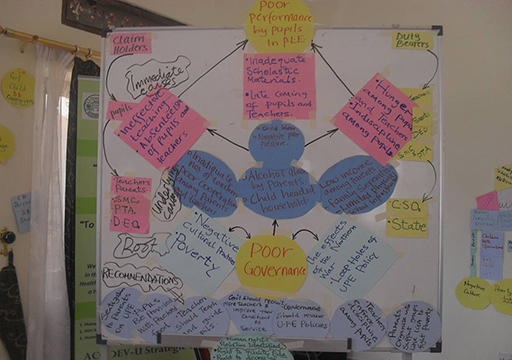3.6 Issues to think about in undertaking community mobilisation
Overall, children’s health is going to be improved far more by the daily decisions and actions made by individuals and families in their own homes, rather than by health workers. So in order to make these daily decisions become healthy decisions, you should equip your community with appropriate skills and knowledge, and empower them through community participation. The greatest resources you have in your community are good relationships with individuals and groups; therefore, you should mobilise them to pool the resources available in the community (Figure 3.5).

Community participation is one of the key community mobilisation techniques. It is the involvement of people in activities of common interest to achieve common goals, working for a joint cause intended for the welfare or development of the people.
Local people have a great amount of experience and insight into what works for them, what does not work for them, and why. So they contribute to the success of any health intervention. Involving local people in planning can increase their commitment to the programme and it can help them to develop appropriate skills and knowledge to identify and solve their problems on their own. Involving local people helps to increase the resources available for the programme, promotes self-help and self-reliance, and improves trust and partnership between the community and health workers. It is also a way to bring about ‘social learning’ for both health workers and local people. Therefore, if you involve the local community in a programme that is developed for them, you will find they will gain from these benefits.

Benefits of community participation
- All social groups feel involved and participate in community matters.
- Solutions to problems are adapted to community capabilities acceptable to all community members.
- The community is empowered with an increased sense of ownership, self-responsibility, self-awareness and self-reliance.
- People are interested in having a well-sustained programme, building on existing local knowledge, resources and capacities.
- It generates community resources thus reducing the overall cost.
3.5 The action cycle of community mobilisation
